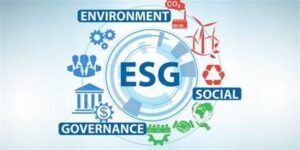The U. S. Department of Housing and Urban Development (HUD) has announced more than $4 Billion in loan capacity and $840 Million in grant funding availability for investments in clean energy at multifamily properties that receive HUD assistance.
The funding is designed to encourage investment in a variety of clean energy projects with a stated goal to improve the quality and the resilience of those properties.
The Green and Resilient Retrofit Program (“GRRP”) was created as a part of the Inflation Reduction Act of 2022 to incentivize investments that reduce energy and utility costs and hope to reduce greenhouse gas emissions at the applicable properties.
HUD put forth 3 key goals for the GRRP:
1. to reduce energy and water use in HUD-assisted multifamily properties;
2. to make HUD-assisted multifamily properties more resilient to extreme weather events and natural disasters, and
3. to reduce greenhouse gas emissions from HUD-assisted multifamily properties.
HUD’s view is that by achieving the stated goals the properties will reduce utility bills and costs of operations, which in turn benefit their tenants. By reducing consumption, a natural outcome will be to also reduce greenhouse gas emissions HUD’s goal is to reduce greenhouse gas emissions by 50% across all participating properties and to reduce modeled energy consumption by at least 25% in each property.
Eligible properties are those receiving HUD assistance through Sections 8, 202, 811 and 236.
Awards are available for the following categories of properties:
Element Awards are for properties that are materially advanced in a recapitalization transaction that includes targeted utility efficiency, carbon emissions, reduction, renewable energy and/or climate resilience measures.
Leading Edge Awards are for properties with a significant capacity to execute a rehabilitation that will achieve an advanced green certification.
Comprehensive Awards are for properties, including those not yet developed, where the property owner is interested in improving the utility efficiency and resilience to climate hazards.
Green Sprouts – The Inflation Reduction Act is a rather amazing cluster of potential benefits and incentive programs for the built environment. HUD has taken the baton and has proceeded to incentivize energy efficiency investments where they are lending money. $4 Billion in lending capacity and $840M in grants are now available. Worthy of checking it out.
Duane Morris has an active ESG and Sustainability Team to help organizations and individuals plan, respond to, and execute on your Sustainability and ESG planning and initiatives. For more information, please contact Brad A. Molotsky, David Amerikaner, Sheila Rafferty-Wiggins, Alice Shanahan, Jeff Hamera, Nanette Heide, Joel Ephross, Jolie-Anne Ansley, Robert Montejo, Seth Cooley, or the attorney in the firm with whom you are regularly in contact.

